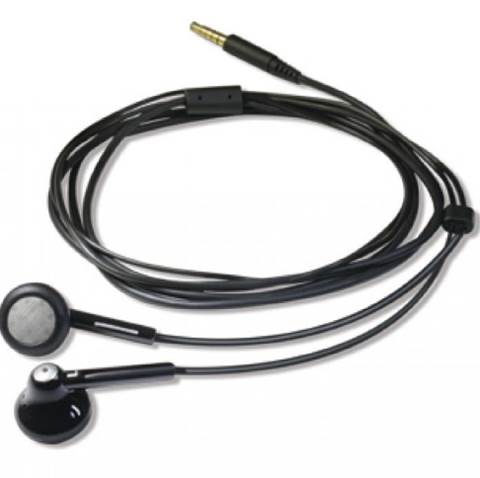For a new-born company which is just 5
years old and focuses on a relatively narrow market niche, Livescribe develops
with an admirably fast pace. Its smartpens which help digitizing smartly the handwritten
comments and notes draw many attentions from a million users. However, the fact
that these customers enjoy writing their notes traditionally by hand does not
mean that they are obsessed by technology progress. In reality, many people
among them are waiting for a new feature: a total wireless workflow, which will
allows them to write their notes with a smartpen and then without any dock or
syncing – their scribbles suddenly appear in cloud and or mobile devices.

The
Livescribe Sky smartpen
As you must have known by now, that is the
gap that the new Sky pen is trying to fill. It first operates very similarly to
their predecessors, Pulse and Echo: it contains a camera and microphone, which
allows capturing handwritten notes and time-linked audio files. (There are choices
for you between 2GB, 4GB and 8GB for the built-in storage). There next things
that happen, however, are very different. You use “buttons” printed in the
exclusive stationery of Livescribe, with the pen’s OLED screen, to choose local
Wi-Fi network, enter the password and synch directly to Evernote. Then the
mainstream online noting platform takes care of every other thing,
automatically load the documents and audios to cloud by using time stamp,
making it available in any device which runs applications or web interfaces of
Evernote. Moreover, the note can be easily search with the help of the optical
character recognition (ORC) of your handwriting.
If there is any inconvenience for the users
to get their requirements, it absolutely is that they are expected to pay for
it. The Sky’s basic model has the same price tag as Echo’s launched price,
$170, but the older pen’s internal storage is doubled the new one, and at the
present, Echo can even be discounted. Moreover, the 4GB and 8GB Sky pen have
the prices of $200 and $250 respectively, which means that it is just rational
if you really do not enjoy writing or typing on screen. Even when assuming that
you absolutely like the pen and ink solution, is a $170 pen worth its price?
Just keep reading to determine.
Hardware
As ever, that customized stationery, which
is crossed by small marks allowing the pen’s camera to identify its position on
the page and then operate its miracles, starts everything of the Livescribe
experience. There is no pressure sensor inside the pen, so it will not properly
attract sketchbook artists or threaten the Wacom Inkling – but recording ideas
rather than art is the actual reason for its design.

The
customized stationery
The stationery is accompanied by the
printed buttons working with the screen’s OLED display to help you navigating
the settings and synch to available networks. In general, besides some synching
issues described in the software part below, this method of control is very
intuitive – the pen always knows which button you mean to tap.
You can print your own stationery by any
normal inkjet, but the available ones in the market have good quality and
desirable – especially when you choose one of the premium options. Unfortunately,
the 2GB pen which is evaluated here just comes with the only one 50-page
“Starter” notepad. It seems to be insufficient and skimpy considering with its
high cost. You do not get anything better with the $200 4GB model of Sky,
either but actually the whole meaning of this smartpen’s idea is benefiting
from the cloud storage, so you should not bother with the larger capacity
anyways.
Everything that you get in the box is a
spare nib and some pen caps, with a normal USB cable to charge the pen from a
spare port on your PC. We really expected the charging dock coming with the pen
in the box, but this is just another missing opportunity to make the pen as
luxury as its $170 price tag. Even though you are not hesitant to pay more,
such dock is still not available now.
There is also a huge omission which is the
additional $20 fee, not included in the original price, to own what is called
the 3D earphones and benefit the full power of this device. There is indeed a
normal 3.5mm earphone jack which makes the pen compatible with the popular
earphones from third parties, but it is not the complete story. For instance,
if you plug the iPhone earphone in, you will be able to record the ambient
noise without mixing with the scratching sound of the pen (which affects
recordings made by internal microphone), but you cannot use it to record phone
calls. The exclusive 3D earphone has this essential advantage: due to the
position of the stereo microphones, it seems to be exceptional in recoding two
sides of the meeting via phones without using the external speakers. The Pulse
comes with just such earphones, but if you need a note in a phone meeting, just
think about paying that extra money.

The
3D headset
In terms of the over-sized quill, its
diameter is about 14mm at the point where you regularly hold, and it feels like
holding the chunky marker with a slightly rubbery coating. It is relatively
easy enough to hold if your hand is big, and we used it to annotate 10 pages
without recognizing any concern. But it should be noted that a small-hand
person is just able to write a couple of pages before starting to grate.
Just a quick overview about the battery
life, if you remember to switch the pen off and deactivate Wi-Fi when it is not
necessary, the pen can suffer for weeks. Our pen still has 30% capacity after
10 days of using. During this period, we used it to annotate roughly 20 pages
of notes and recorded a one-hour audio across many different meetings.